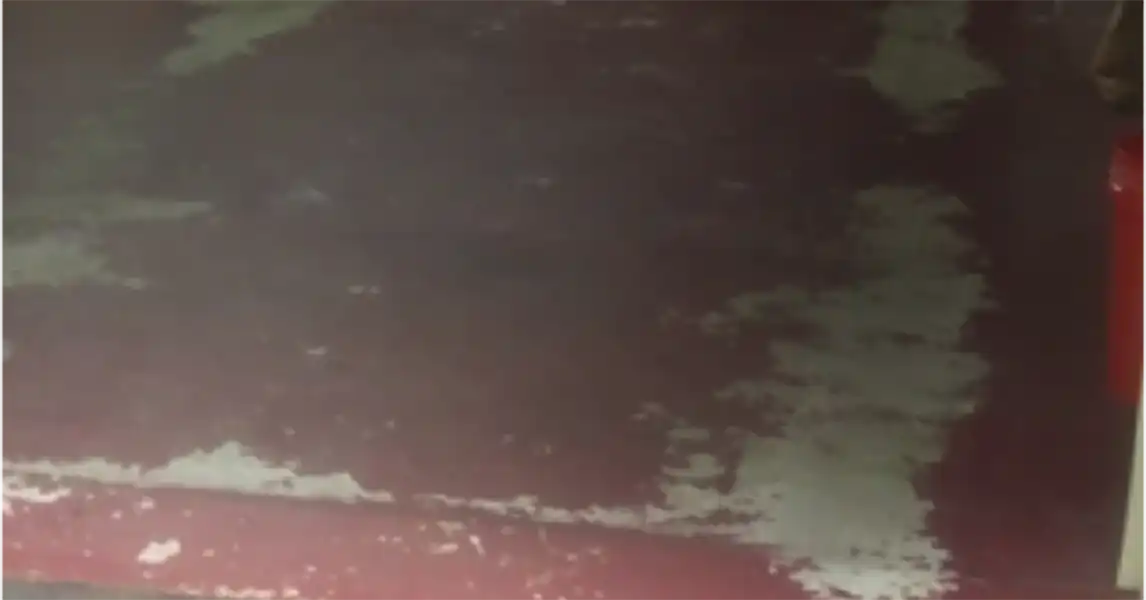 STRONGHOLD FLOORS gets asked all the time about why epoxy floor coatings fail. Sometimes, it’s for a garage floor that was painted with a big-box store’s epoxy kit. Other times, it’s a commercial service garage where the epoxy just won’t stick.
STRONGHOLD FLOORS gets asked all the time about why epoxy floor coatings fail. Sometimes, it’s for a garage floor that was painted with a big-box store’s epoxy kit. Other times, it’s a commercial service garage where the epoxy just won’t stick.
The Seven Most Common Reasons Epoxy Floor Coatings Fail Are:
- Improper Surface Preparation
- Contaminated Concrete
- Poor Bond Strength
- Insufficient Wicking/Wet-Out
- Moisture Problems
- Excessive Humidity
- Product Mixing Issues
These issues typically hold true for other coatings such as polyaspartic or polyurea in addition to epoxy. Read on to learn more details about these listed problems.
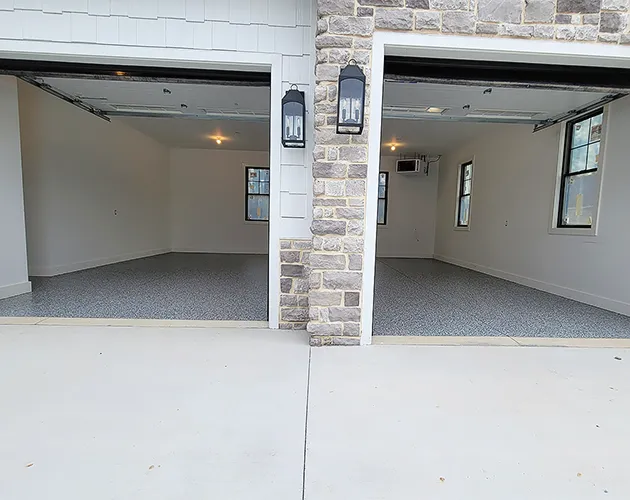
Epoxy coatings from a reputable, professional coatings company typically don't fall victim to these issues.
Improper Surface Preparation
Too often, an epoxy paint kit from a big box store will instruct the DIY user to just clean the floor or etch it with muriatic acid. Cleaning alone is NEVER enough.
Acid etching, while a valid preparation method, will only work if the concrete’s pores are open enough to allow the acid to react and remove the laitance (the thin cement paste on the very top). Acid etching will also not suffice for areas of the concrete that are sealed, oil stained, painted, or contaminated (with wax, tire shine, or other chemicals).
To ensure a proper concrete surface profile (CSP 2 or 3), STRONGHOLD FLOORS normally utilizes our shrouded concrete grinders. On rare occasion, we may also shot blast the concrete. For more information about our concrete surface preparation, read Grinding vs. Shot Blasting.
Contaminated Concrete
Even if the concrete is properly prepared, contaminants such as fatty acids (from cooking), silicone, siloxane, and acrylics can soak in deep enough to still present an issue for proper coatings adhesion. Often, heavily contaminated concrete areas must be heavily shot blasted (CSP-4 or greater) or be cut/replaced.
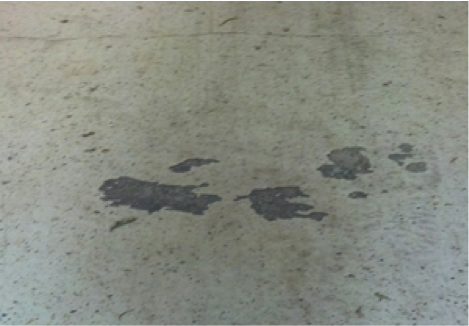
Poor Bond Strength
This is one of the areas where professional coatings shine and DIY epoxy paints fail. A good coating will have an adhesive strength that exceeds the concrete's pull-strength. Most epoxy paint kits fail here, as they are often just an epoxy fortified latex paint or have too many fillers (which makes the epoxy easier to roll out and cheaper, but greatly decreases its bond strength).
Insufficient Wicking / Wet-Out
A good coating should “wet-out” the properly prepared concrete – meaning it soaks into all open pores and surface imperfections created by the preparation process. Materials that setup too quickly, are too thick to impregnate the pores, or shrink too drastically during curing will not fully wet-out the concrete.
This issue is often encountered by the “professionals” using the newest, state of the art, one day coatings. These new installers don’t understand that the materials have setup too quickly to actually soak into the concrete, leading to premature failure of the coatings. This issue is very common with new companies who are trying to do one day floors in extremely hot and humid weather.
To learn more about the pitfalls of one day coatings, read: The Pitfalls of One Day Coating Installations and Polyaspartic vs Epoxy: Which is better and why?
Moisture Problems
While not typical in garages of Pennsylvania, Maryland, and Virginia, there are some situations where a garage may have moisture issues under the concrete slab that affect the ability of coatings to perform properly.
When too much moisture is trying to migrate upward through a concrete slab, it will put pressure on the coatings and, once high enough, that pressure will force either the coatings off the concrete, or the coatings will pull apart the near-wear-surface of the concrete.
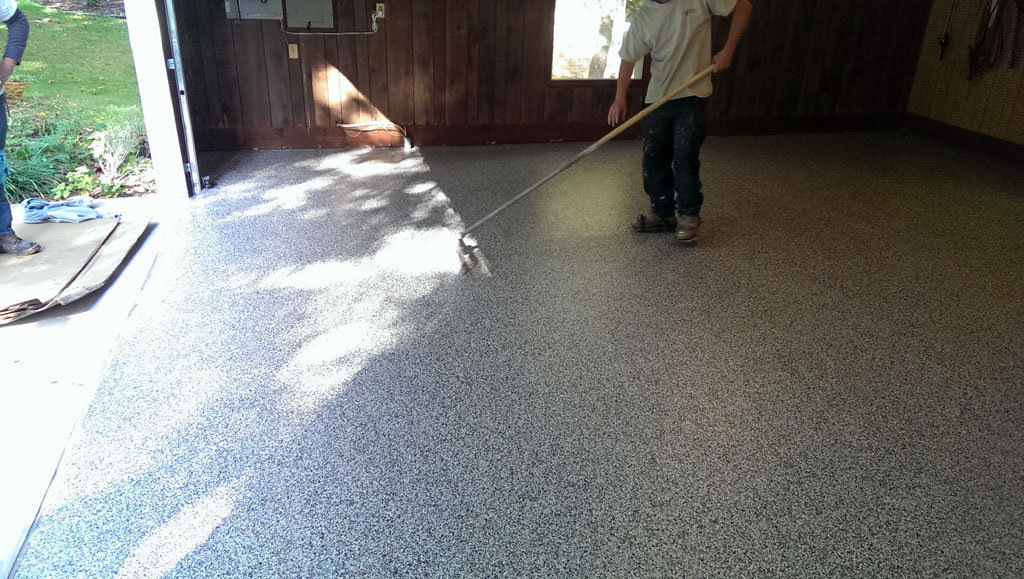
Suspended-deck garage floors often have this kind of problem. We used a flexible membrane epoxy system for this particular garage to combat this issue.
These problems usually exist due to poor garage floor construction (no stone base under the concrete slab) or due to water migration issues (spouting and down spouts directing water under the garage floor). On occasion, these problems may exist due to improper grading of the landscaping around the garage. While very uncommon, our staff proactively checks for these types of issues when evaluating the garage for potential customers.
Excessive Humidity
Excessive humidity during the coatings installation can affect the inter-coat adhesion (the strength of the bond between layers of polymer coatings). In particular, polyurethane, polyurea, and polyaspartic are more humidity sensitive than most epoxies and acrylics. Too much humidity will cause delamination, cloudiness, and improper curing.
When applying coatings, the installers must be aware of the environmental conditions and adjust based upon humidity/dew point, temperature, and other weather factors.
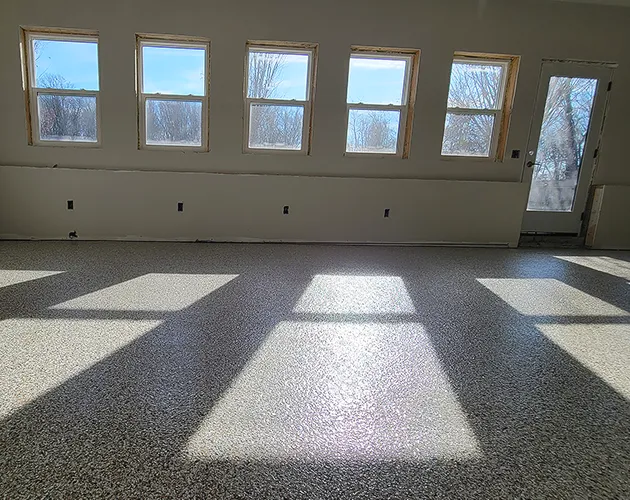
Temperature can affect how we apply our coatings and even which chemicals we use.
Product Mixing Issues
If the products used are not mixed at the proper ratios and for the proper amount of time, the coatings will not cure properly. Additionally, many coatings are sensitive to the amount of air that is entrained during the mix process.
No Need to Worry!
STRONGHOLD FLOORS proactively works around the issues listed above to deliver professionally installed floor coatings tailored to your individual needs.
Request a free quote today to get started with your floor coatings project, or read one of the listed blog posts below for more information about our coatings or the issues associated with DIY coatings:
- Professional Garage Floors Epoxy – Skip the Paint Kit & Frustration
- 5 Things to Consider Before You DIY Concrete Floor Coatings
- Top 5 Myths About Garage Floor Coatings
Mike Mincemoyer is the Founder & President of STRONGHOLD FLOORS and one member of the ownership team. Mike has assisted many residential and commercial customers to determine why previously installed coatings failed and replaced them with proper coatings systems. He has assisted many homeowners to determine whether coatings were feasible in troubled basements and on-grade slabs.
Editors Notes:
LAST UPDATED: Sep 15, 2025



